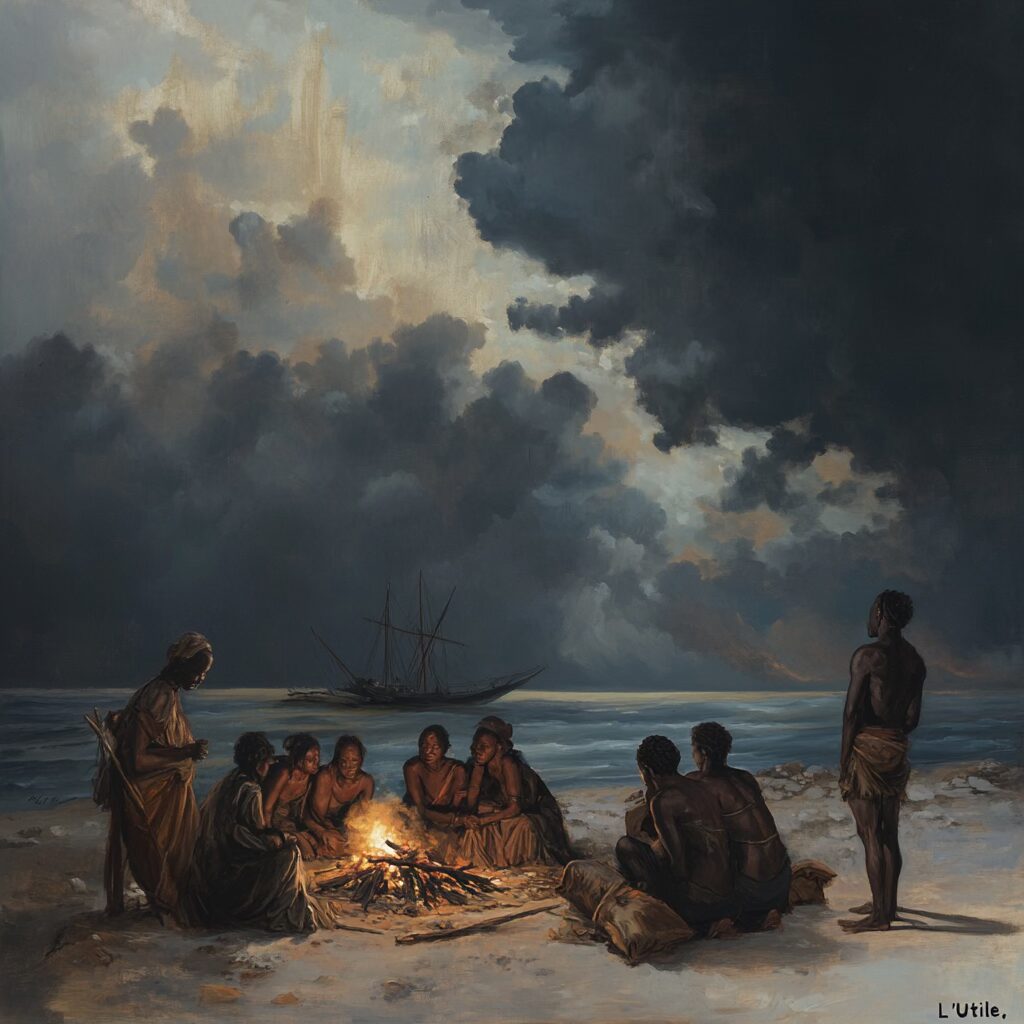In 1761, a French ship ran aground on Tromelin Island, abandoning 80 Malagasy slaves to an unimaginable fate. Fifteen years later, an extraordinary rescue revealed a story of courage, ingenuity, and humanity in the face of adversity.
Abandonment on Tromelin
On the night of July 31, 1761, a maritime tragedy disrupted the lives of a crew and 160 Malagasy slaves. L’Utile, a ship belonging to the French East India Company, wrecked on a sandy islet off the coast of Madagascar. This then-unknown place would later become Tromelin Island. The shipwreck illuminated a harsh reality: humanity abandoned for profit, where lives were valued only in terms of their market worth.
Bound for the illegal slave trade, L’Utile carried men, women, and children crammed into horrific conditions, destined to fuel the slavery system. The story of these captives, abandoned for fifteen years, remains one of the most poignant tales of the transatlantic slave trade.

When the ship struck a reef, the white crew and some slaves escaped the wreck. They found themselves on a barren sandbank devoid of essential resources like fresh water. Desperation forced the survivors to cooperate initially. Whites and Blacks worked together to construct a makeshift boat from the remnants of L’Utile. However, this temporary union soon dissolved.
Once the boat, La Providence, was completed, it became evident it could not carry everyone. On September 27, 1761, the white crew left the island, promising to send help soon. The Malagasy slaves, left behind, quickly realized this promise was a lie.
The abandonment of the slaves on Tromelin exemplifies the colonial system’s utter disregard for the lives it exploited. While the crew sailed to safety, the captives had to adapt to survive. This act of abandonment transcended the shipwreck itself; it symbolized an era when enslaved people were considered property rather than human beings.
Records show no immediate attempts to organize a rescue mission. For fifteen years, the captives remained isolated, forgotten by those who had forcibly taken them from their homeland.

On Tromelin, the survivors displayed remarkable ingenuity. Using limited resources, they built shelters from shipwreck debris and coral blocks. They crafted rudimentary tools from metal scraps, fed themselves with turtles, bird eggs, and fish, and wove clothing from braided feathers. Their daily life was a testament to an unimaginable instinct for preservation.
Archaeological excavations led by Max Guérout and his team have shed light on their determination to survive. Utensils, structures, and artifacts uncovered tell a story of creativity under extreme conditions. These items, displayed in various museums, reveal a forgotten chapter in the history of Malagasy slaves.
It was not until 1776 that a ship, La Dauphine, finally reached Tromelin. Fifteen years after their abandonment, only seven women and one eight-month-old child were found alive. These last survivors were taken to Mauritius, where they were granted their freedom. However, their future remained uncertain. They refused to return to Madagascar, fearing they would be re-enslaved.
Their fate after liberation is unclear in historical records. These women and the child, who defied death for years, vanished from history—a silence that reflects the broader erasure of enslaved people’s stories.
The story of Tromelin is more than just a shipwreck. It exposes the violence of slavery, colonial disregard, and institutionalized indifference. This sandbank in the Indian Ocean has become a symbol of abandonment but also of persistent humanity in the face of erasure.
In 2006, archaeological excavations revived this buried memory. The recovered artifacts and reconstructed narratives honor the Malagasy people who survived in absolute isolation. Tromelin is now a protected site, part of an effort to preserve historical and cultural memory.
Tromelin’s story challenges us to reconsider the value of human lives in a world shaped by injustice. It reminds us not to forget those deliberately erased from history. The survivors of Tromelin, despite their silence in the archives, deserve a place in collective memory.
Their struggles and tenacity offer insight into contemporary battles for justice. Tromelin is not just a geographical location; it’s a constant reminder of the colonial legacy and the responsibility of current generations to uncover hidden truths. Honoring these survivors affirms that every life matters, even in the darkest chapters of history.
Notes and references
- Visual documentation and reports:
The documentary Tromelin, the Island of Forgotten Slaves, directed by Daniel Vigne and broadcast on Arte, provides a detailed and illustrated account of the events. - Living conditions on Tromelin:
See the reports by Max Guérout, former naval officer and archaeologist. - Tromelin as a historical symbol:
Slate article, “Abandoned on a Deserted Island: The Tragedy of Tromelin’s Forgotten Slaves,“ exploring the memorial and political dimensions of this story. - Survival on a desert island:
Analysis by Daniela Gariglio, Italian psychoanalyst, in a collective work on solitude and human adaptability in extreme conditions. - Cultural and political significance:
Le Monde article, “What is this Tromelin Island that causes so much reaction?“ reflecting on the importance of preserving this memory.
